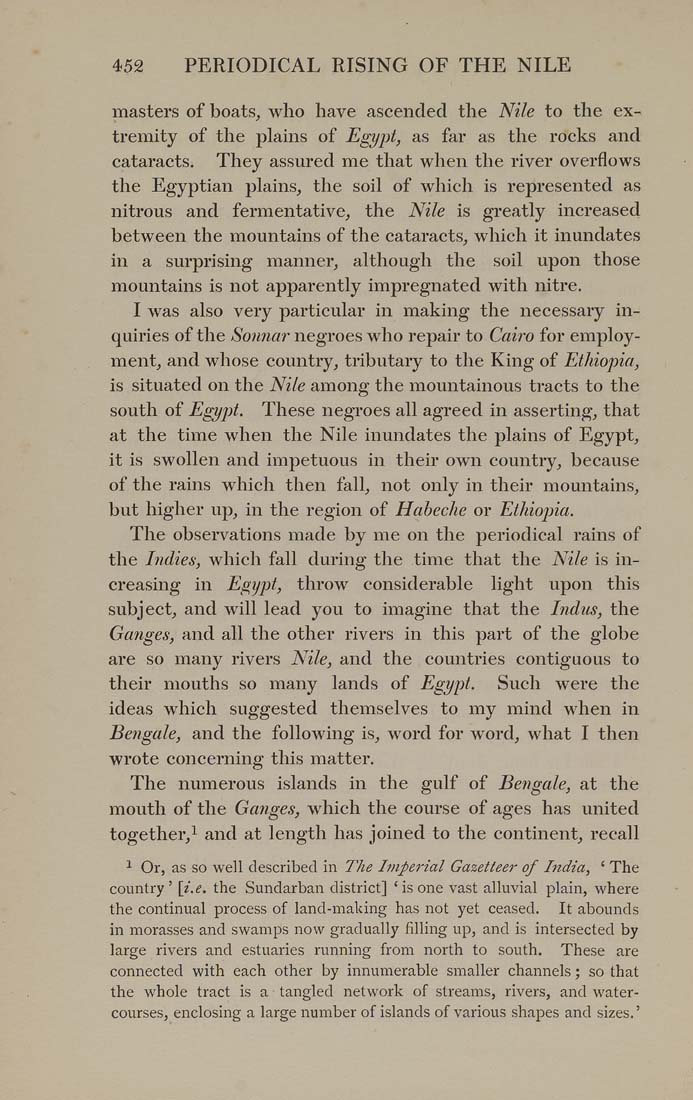452 PERIODICAL RISING OF THE NILE
masters of boats, who have ascended the Nile to the ex¬
tremity of the plains of Egypt, as far as the rocks and
cataracts. They assured me that when the idver overflows
the Egyptian plains, the soil of which is represented as
nitrous and fermentative, the Nile is greatly increased
between the mountains of the cataracts, which it inundates
in a surprising manner, although the soil upon those
mountains is not apparently impregnated with nitre.
I was also very particular in making the necessary in¬
quiries of the Sonnar negroes who repair to Cairo for employ¬
ment, and whose country, tributary to the King of Ethiopia,
is situated on the Nile among the mountainous tracts to the
south of Egypt. These negroes all agreed in asserting, that
at the time when the Nile inundates the plains of Egypt,
it is swollen and impetuous in their own country, because
of the rains which then fall, not only in their mountains,
but higher up, in the region of Habeche or Ethiopia.
The observations made by me on the periodical rains of
the Indies, which fall during the time that the Nile is in¬
creasing in Egypt, throw considerable light upon this
subject, and will lead you to imagine that the Indus, the
Ganges, and all the other rivers in this part of the globe
are so many rivers Nile, and the countries contiguous to
their mouths so many lands of Egypt. Such were the
ideas which suggested themselves to my mind when in
Bengale, and the following is, word for word, what I then
wrote concerning this matter.
The numerous islands in the gulf of Bengale, at the
mouth of the Ganges, which the course of ages has united
together,! and at length has joined to the continent, recall
^ Or, as so well described in The Imperial Gazetteer of India, ' The
country' [i.e. the Sundarban district] 'isone vast alluvial plain, where
the continual process of land-making has not yet ceased. It abounds
in morasses and swamps now gradually filling up, and is intersected by
large rivers and estuaries running from north to south. These are
connected with each other by innumerable smaller channels; so that
the whole tract is a tangled network of streams, rivers, and water¬
courses, enclosing a large number of islands of various shapes and sizes.'
|








